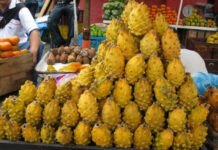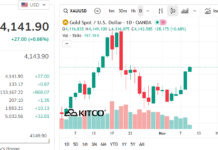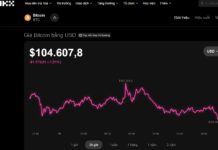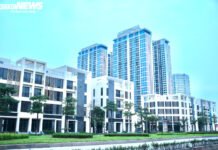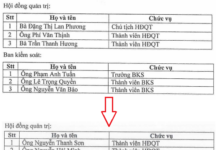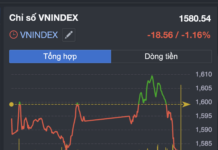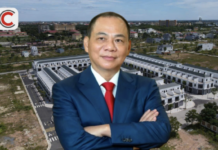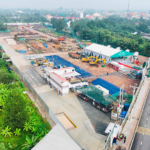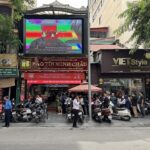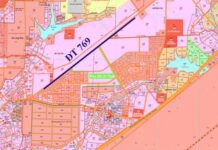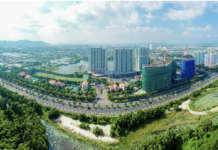In the narrow alleys of Hanoi’s Old Quarter, tiny houses are crammed into tight spaces, where natural light barely penetrates. Most homes share walls or are separated by a mere half-meter pathway. Many residents utilize lofts, makeshift balconies for cooking, drying clothes, or even place communal water tanks on rooftops.
Despite the limited living conditions, residents remain due to the central location, convenient livelihoods tied to the Old Quarter, and opportunities to open shops, rent rooms, or engage in small-scale trading. This unique spatial characteristic makes Old Quarter real estate among the rarest in the capital.
Deep within an alley on Hang Bac Street, a two-story house with a 1.6m frontage and 4m depth is listed for sale at 5 billion VND. The ground floor serves as a communal living space and kitchen, while the second floor is a loft bedroom. The owner promises quick handover and complete legal documentation.
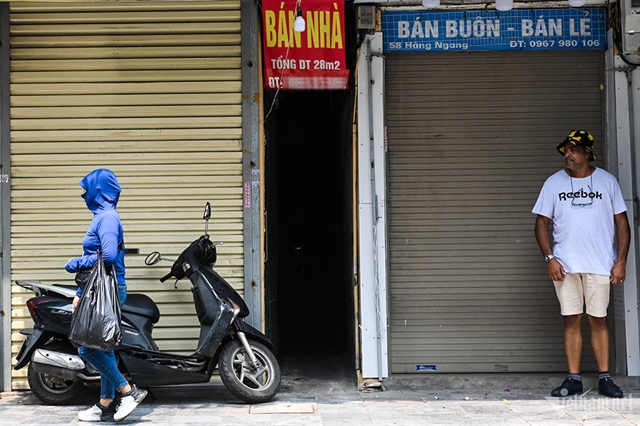
Numerous small houses nestled deep within Old Quarter alleys. Photo: Thạch Thảo |
A survey of the Old Quarter reveals numerous modest alleyway homes with staggeringly high prices.
On Hang Dao Street, an 8.2m² single-story house in an alley is priced at 4.2 billion VND, suitable for a studio or rental. Nearby, a 7.8m² house in a Hang Bo alley is listed at 5.2 billion VND. Another 7.2m² property in a Hang Gai alley is priced at 6.5 billion VND.
Despite their central locations, these homes have been on the market for a long time without buyers. The narrow alleys, unsuitable for car parking, and the disproportionate prices relative to their utility are the main reasons.
Prices Reach 800 Million VND/m²
Current alleyway house prices in Hoan Kiem’s central area range from 200 to 800 million VND/m² for car-accessible alleys, while motorcycle-only alleys range from 130 to 500 million VND/m², depending on location and alley characteristics.
The Trang Tien, Dong Xuan, and Hang Dao areas command the highest prices. In former Trang Tien ward, car-accessible alley houses reach 600-800 million VND/m², while motorcycle alleys range from 400-500 million VND/m². Dong Xuan and Hang Dao prices are 500-700 million VND/m² for car alleys and 350-480 million VND/m² for motorcycle alleys.
The Ly Thai To, Hang Bai, Tran Hung Dao, and former Hang Bong wards maintain prices between 380-600 million VND/m².
Other areas like Phuc Tan, Chuong Duong, and Phan Chu Trinh have lower prices. Car-accessible alley houses here are 200-360 million VND/m², while motorcycle alleys average 130-220 million VND/m².
Old Quarter alleyway house prices significantly exceed those in neighboring districts like Ba Dinh or Hai Ba Trung. In Ba Dinh, similar locations (Kim Ma Thuong, Ngoc Ha, Giang Van Minh) record 300-500 million VND/m² for car alleys and 200-320 million VND/m² for motorcycle alleys.
In Hai Ba Trung, car-accessible alley houses are around 250-400 million VND/m², but with double the area and better infrastructure.
Real estate agent Nguyen Quang Thanh notes that Old Quarter properties have virtually no new supply. Despite small sizes and deterioration, prices remain high due to their heritage location. However, short-term profit or price increase potential is limited by legal and infrastructure constraints.
According to Thanh, central Old Quarter property prices have risen continuously over the past two years, but actual transactions are limited. Most sellers expect very high prices due to the central location, but few buyers are willing to pay. Narrow alley houses, often just a few square meters, typically require 10-20% price reductions to attract buyers.
Old Quarter homes are no longer quick investment opportunities. Instead, many view them as collectible assets symbolizing Hanoi’s history and culture. Buyers typically don’t seek short-term profits but rather aim to own a rare, prime location in the capital.
Duy Anh
– 20:45 09/11/2025
Unleashing Growth: A Wave of Infrastructure Investments Transforms Ho Chi Minh City’s Mega Urban Landscape
Discover the transformative impact of Ho Chi Minh City’s strategic infrastructure projects, including Highway 13, Ring Road 3, Ring Road 4, the Metro connecting HCMC to Binh Duong, the Bien Hoa – Vung Tau Expressway, and the HCMC – Thu Dau Mot – Chon Thanh route. These key developments are now prioritized for accelerated investment post-merger, fueling urban growth, industrial expansion, commercial opportunities, and a thriving real estate market.
Deputy Prime Minister: Government Implementing Comprehensive Measures to Control Gold and Real Estate Prices
On October 30th, Deputy Prime Minister Le Thanh Long addressed the National Assembly, providing clarifications on key economic and social issues raised during the discussion session. He elaborated on topics such as economic growth, public investment disbursement, the gold market, real estate, education, and legal framework development for the year 2025 and the 2021-2025 period.
Tightening Second-Home Loans: Not All Markets Are Overheating
A newly launched affordable housing project has sparked a frenzy among the wealthy, who are swiftly investing in these properties. Meanwhile, the intended beneficiaries—the less affluent—find themselves sidelined. To stabilize the market, stringent measures must be implemented to curb speculation and prevent the wealthy from reselling social housing and low-cost homes for profit.



